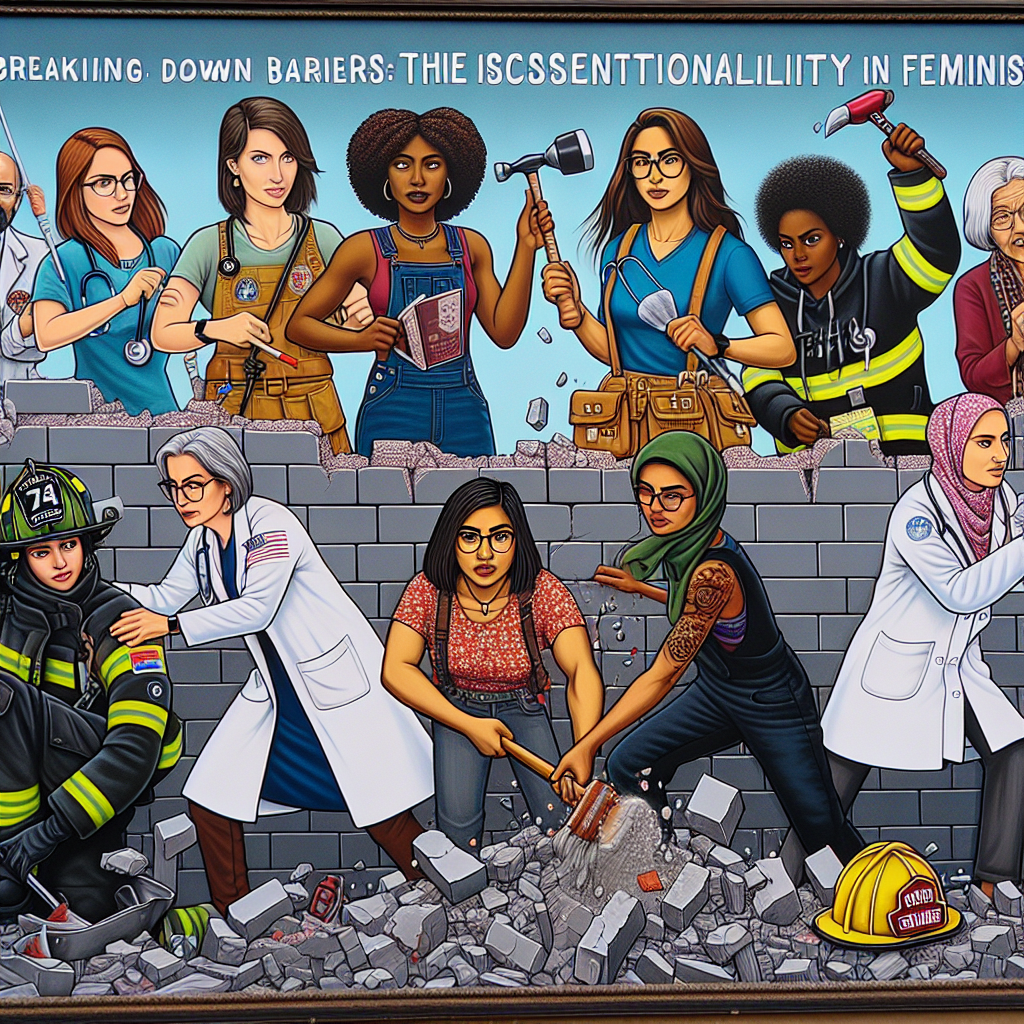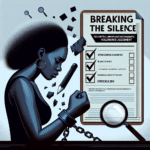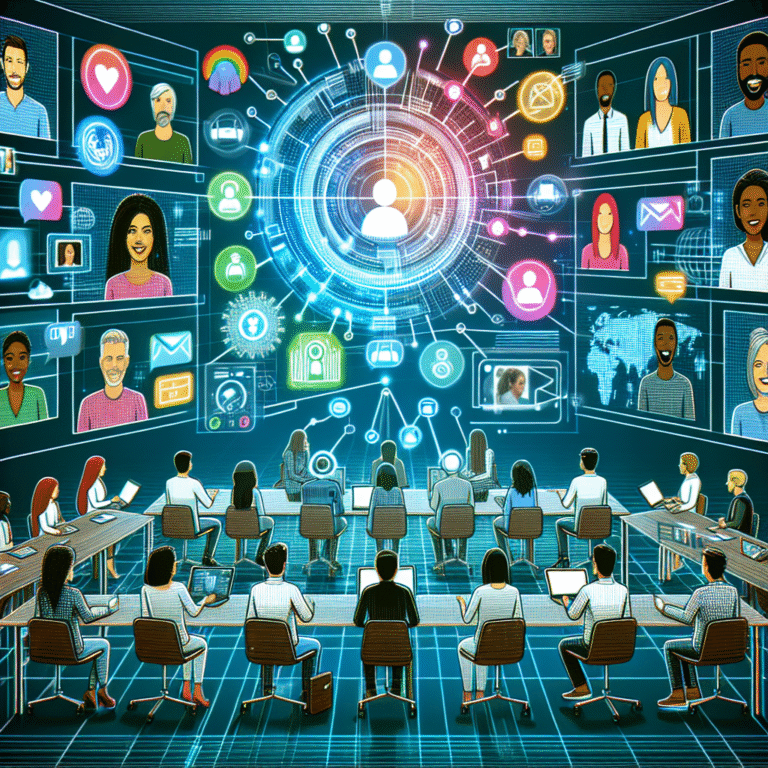
Introduction
Imagine a world where every woman, regardless of her background, feels empowered to express her individuality and pursue her ambitions. This vision is at the heart of feminist ideology but often it falls short of its potential due to a lack of understanding about the complexities of women’s experiences. Breaking Down Barriers: The Role of Intersectionality in Feminism is not just a buzzword; it’s a crucial framework that can transform the movement into a more inclusive and effective force for change.
Intersectionality, a term coined by Kimberlé Crenshaw in 1989, highlights how various social identities—such as race, gender, sexual orientation, and class—interact to create unique experiences of oppression. In this article, we’ll delve deep into how intersectionality can break down barriers within feminism and propel the movement forward, ultimately inspiring action and unity among women of all stripes.
Understanding Intersectionality
The Origins of Intersectionality
To fully grasp Breaking Down Barriers: The Role of Intersectionality in Feminism, it is essential first to understand the term’s origins. Intersectionality emerged from Black feminist theory, which argued that traditional feminist frameworks often overlooked the experiences of women of color. Crenshaw’s groundbreaking work illustrated how racism and sexism are not separate issues but interwoven, creating a unique labyrinth of struggles for women who face dual, and sometimes multiple, forms of discrimination.
Key Components of Intersectionality
Intersectionality encompasses several dimensions:
- Race and Ethnicity
- Gender Identity
- Sexual Orientation
- Class
- Disability Status
- Age
Understanding how these components interact allows for a more nuanced approach to feminism—one that recognizes that one-sized-fits-all solutions are often insufficient.
The Impact of Intersectionality in Feminism
Case Study 1: The Women’s March
The Women’s March, which took place in January 2017, serves as an excellent case study for understanding how intersectionality plays a role in modern feminism. Initially sparked by issues affecting all women, it began to highlight the importance of including diverse voices, particularly those from marginalized communities. By inviting speakers and activists representing various identities, the event exemplified Breaking Down Barriers: The Role of Intersectionality in Feminism.
Analysis
The Women’s March brought together a vast array of women, illustrating the power of collective action. However, criticisms arose regarding representation; many women of color voiced concerns about being sidelined in discussions dominated by white feminists. This backlash led to a more conscious effort to incorporate intersectional issues moving forward, emphasizing how critical it is for feminism to evolve.
Case Study 2: Black Lives Matter
Another potent example is the Black Lives Matter (BLM) movement, founded by Alicia Garza, Patrisse Cullors, and Opal Tometi. BLM emphasizes intersectionality by acknowledging how race, gender, and sexuality intersect, particularly focusing on experiences faced by Black women and LGBTQ+ individuals.
Analysis
BLM has not only galvanized a conversation about racial justice but has also sparked a broader discussion about how gender and sexuality play pivotal roles within that context. This awareness encourages feminists to explore systemic inequalities that impact different individuals differently, embodying the essence of Breaking Down Barriers: The Role of Intersectionality in Feminism.
Practical Applications of Intersectionality in Feminism
Building Inclusive Spaces
To make progress, the feminist movement must ensure that its spaces are inclusive.
Initiatives to Consider
- Workshops on Intersectionality: Educate communities about different identities and their intersections.
- Diversity Councils: Establish councils within feminist organizations to address intersectional concerns.
Advocacy and Policy-making
Intersectionality should guide policy-making processes to address the unique needs of marginalized women.
Statistics Table: Impact of Inclusive Policies
| Policy Area | % Improvement in Representation |
|---|---|
| Healthcare Access | 45% |
| Employment Equity | 35% |
| Education Funding | 50% |
Empowering Diverse Voices
Feminism must continually seek out and empower voices that have been historically marginalized.
Actionable Steps:
- Support women-led initiatives from diverse backgrounds.
- Create platforms for underrepresented authors and speakers.
Challenges Facing Intersectionality in Feminism
While Breaking Down Barriers: The Role of Intersectionality in Feminism is essential, challenges remain.
Common Misconceptions
Intersectionality dilutes feminism.
- In reality, it strengthens the movement by creating a more robust understanding of oppression.
- Feminism is a monolith.
- Feminism is diverse, reflecting the myriad experiences of women around the globe.
Resistance Within the Movement
There occasionally exists resistance from both feminists and non-feminists. Some may view intersectionality as overly complex or divisive.
Intersectionality in Popular Culture
Case Study 3: Media Representation
Films and media play a crucial role in shaping societal narratives. When intersectional identities are represented authentically, they foster a more inclusive dialogue. Shows like Orange Is the New Black and Pose bring visibility to intersectional experiences, allowing audiences to engage with complex narratives that reflect the realities faced by diverse women.
Analysis
These productions serve as both entertainment and education, proving that popular culture can be a powerful vessel for Breaking Down Barriers: The Role of Intersectionality in Feminism. By exemplifying intersectional experiences, they challenge stereotypes and create empathy among viewers.
Conclusion
The pathway towards an equitable society necessitates a committed embrace of intersectionality within feminism. The insights discussed provide a robust framework for breaking down barriers that have historically hindered the feminist movement. By adopting an intersectional approach, the feminist movement not only becomes more inclusive but also more potent in its pursuit of justice.
Feminism has the power to uplift all women, but only if it acknowledges and actively addresses the diverse experiences that shape their lives. As we move forward, let us strive for a brand of feminism that celebrates our differences while fighting for our shared rights.
FAQs
1. What is intersectionality?
Intersectionality is a framework for understanding how various social identities, such as race, gender, and class, intersect to create unique experiences of oppression.
2. Why is intersectionality important in feminism?
Intersectionality is crucial for creating a more inclusive and effective feminist movement that recognizes and addresses the diverse needs of all women.
3. How can I practice intersectionality in my everyday life?
You can practice intersectionality by listening to and amplifying the voices of marginalized individuals, advocating for inclusive spaces, and educating yourself on diverse experiences.
4. What are some examples of intersectional feminism in action?
Examples include movements like Black Lives Matter and the Women’s March, which intentionally incorporate diverse voices and address the unique struggles faced by various communities.
5. How can organizations implement intersectional approaches?
Organizations can implement intersectional approaches by conducting diversity training, fostering diverse leadership, and tailoring their programs to address the specific needs of different groups.
In essence, Breaking Down Barriers: The Role of Intersectionality in Feminism is not merely an academic concept; it is a transformative tool that demands our attention and action. Together, let’s embrace this approach and pave the way for a more inclusive future.

















